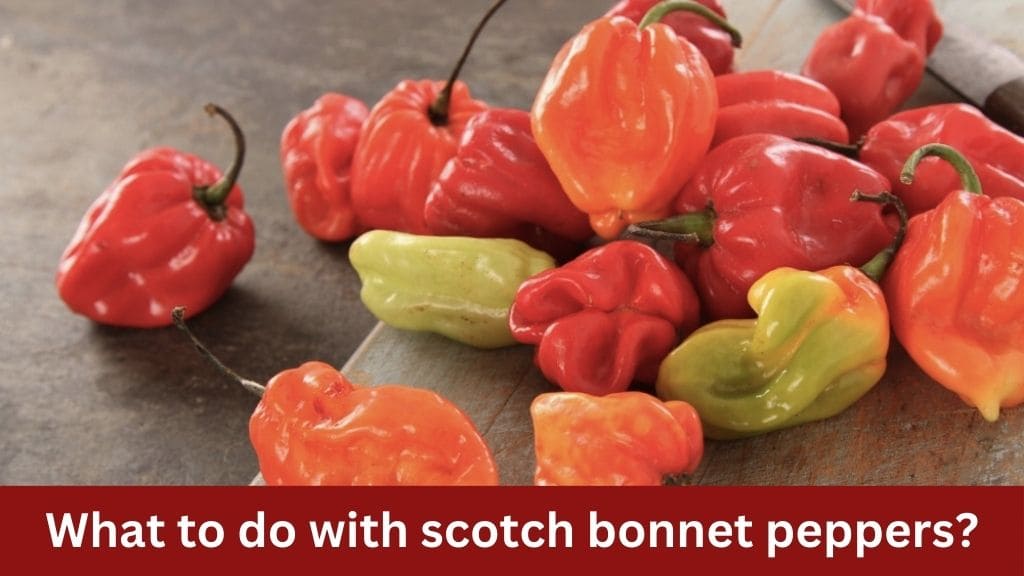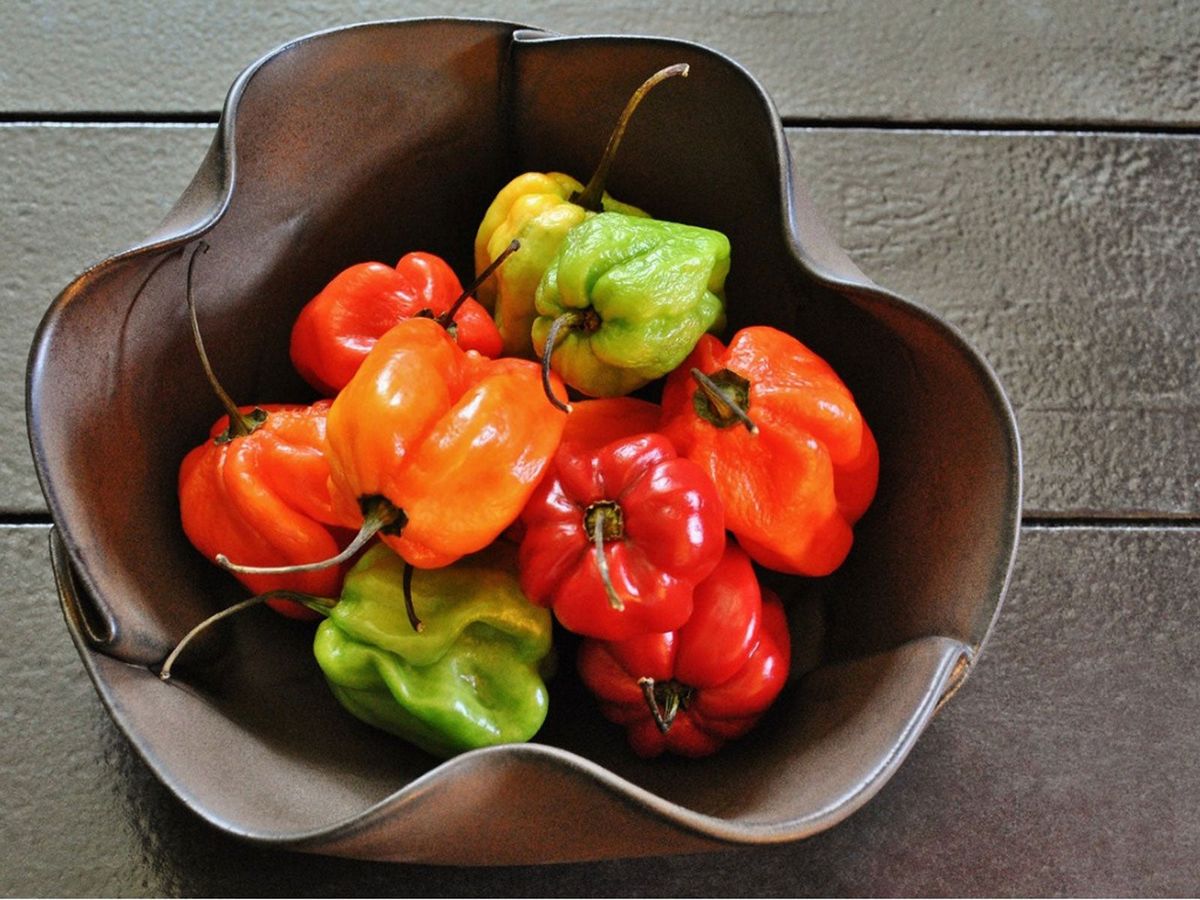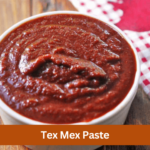Scotch bonnet peppers, with their vibrant colors and intense heat, add a fiery kick to any dish. But what exactly can you do with these spicy gems? In this blog post, we’ll delve into some mouthwatering recipes that showcase the versatility of scotch bonnet peppers. From sauces to marinades and everything in between, get ready to tantalize your taste buds with these culinary delights.
Before we dive into the recipes, let’s take a moment to appreciate the scotch bonnet pepper itself. Originating from Jamaican and Caribbean cuisine, these peppers are known for their unique flavor profile and high heat levels. With a Scoville rating ranging from 100,000 to 350,000, they pack quite a punch!
Flavor Profile:
- Scotch bonnet peppers offer more than just heat; they also boast fruity notes reminiscent of apple, cherry, and tomato.
- Their bright colors, ranging from red to orange to yellow, make them visually appealing additions to any dish.
Safety First: Handling Scotch Bonnet Peppers

Before we get cooking, it’s important to note that scotch bonnet peppers can be extremely hot and may cause skin irritation. Here are a few safety tips to keep in mind when handling these fiery peppers:
- Wear Gloves:
- Before handling scotch bonnet peppers, don a pair of disposable gloves to protect your hands from the spicy oils present in the peppers.
- Even if you have experience handling spicy peppers, wearing gloves is a simple yet effective way to prevent any accidental contact with sensitive areas like your eyes or skin.
- Avoid Touching Your Face:
- Scotch bonnet peppers contain capsaicin, the compound responsible for their heat.
- Touching your face, particularly your eyes or any mucous membranes, after handling the peppers can lead to irritation or burning sensations.
- To minimize the risk, refrain from touching your face until you’ve thoroughly washed your hands with soap and water.
- Use Caution When Chopping:
- When slicing or chopping scotch bonnet peppers, exercise caution to avoid any accidental cuts or injuries.
- Consider using a sharp knife and a stable cutting surface to maintain control and precision while minimizing the risk of slips or accidents.
- Additionally, avoid inhaling directly over the peppers while chopping to prevent inhaling any spicy particles that may irritate your respiratory system.
- Proper Disposal:
- After handling scotch bonnet peppers, dispose of any used gloves, cutting boards, or utensils that came into contact with the peppers.
- Wash all surfaces, utensils, and cutting boards with hot, soapy water to remove any traces of capsaicin and prevent cross-contamination.
- Be mindful of where you discard any pepper seeds or membranes, as they can still contain potent levels of capsaicin and should be disposed of safely.
- Seek Medical Attention if Necessary:
- In the event of accidental contact with scotch bonnet pepper oils resulting in skin irritation, immediately rinse the affected area with cool water.
- If irritation persists or if pepper oils come into contact with sensitive areas like the eyes, seek medical attention promptly.
- Remember that prevention is key, so taking precautionary measures and handling scotch bonnet peppers with care can help prevent any potential discomfort or injuries.
Flavorful Recipes with Scotch Bonnet Peppers
1. Spicy Scotch Bonnet Pepper Sauce:

This versatile sauce can be used as a dip, marinade, or condiment to add a fiery kick to any dish.
Ingredients:
-
- 4 ripe scotch bonnet peppers, stemmed and seeded
- 2 cloves garlic, minced
- 1/4 cup white vinegar
- 1 tablespoon honey
- Salt to taste
Instructions:
- Preparation of Peppers: Begin by preparing the scotch bonnet peppers. Carefully remove the stems and seeds from the peppers to reduce their heat level and bitterness. Use caution when handling the peppers, wearing gloves to protect your hands from the spicy oils.
- Blending: In a blender or food processor, combine the seeded scotch bonnet peppers, minced garlic, white vinegar, honey, and a pinch of salt. Blend until smooth, ensuring that all ingredients are well incorporated.
- Adjusting Consistency: Depending on personal preference, the consistency of the sauce can be adjusted by adding more or less vinegar. For a thinner sauce, additional vinegar can be added gradually until the desired consistency is achieved.
- Taste Testing: Before transferring the sauce to a storage container, it’s essential to taste and adjust the seasoning as needed. Add more salt or honey if desired, and blend again to incorporate any additional ingredients.
- Storage: Transfer the prepared sauce to a sterilized jar or bottle with a tight-fitting lid. Store the sauce in the refrigerator to preserve its freshness and flavor. Properly stored, the sauce can last for up to two weeks.
Serving Suggestions:
- Spicy Scotch Bonnet Pepper Sauce can be used in various ways to add heat and flavor to dishes. It serves as an excellent dip for chips, crackers, or vegetables, offering a fiery kick with every bite.
- As a marinade, the sauce can be brushed onto meats, seafood, or vegetables before grilling or roasting, infusing them with spicy flavor and caramelizing beautifully when cooked.
- Additionally, Spicy Scotch Bonnet Pepper Sauce can be drizzled over tacos, sandwiches, or grilled meats as a finishing touch, adding a burst of heat and brightness to the dish.
2. Jamaican Jerk Chicken:

This classic Jamaican dish features marinated chicken infused with the flavors of scotch bonnet peppers and aromatic spices.
Ingredients:
-
- 4 chicken thighs, bone-in and skin-on
- 2 scotch bonnet peppers, seeded and finely chopped
- 2 tablespoons soy sauce
- 1 tablespoon brown sugar
- 1 teaspoon ground allspice
- 1 teaspoon dried thyme
- 1/2 teaspoon ground cinnamon
- Salt and pepper to taste.
Instructions:
- Preparation of Marinade: Begin by preparing the marinade for the chicken. In a bowl, combine finely chopped scotch bonnet peppers, soy sauce, brown sugar, ground allspice, dried thyme, ground cinnamon, salt, and pepper. Mix until all ingredients are well incorporated.
- Marinating the Chicken: Place the chicken thighs in a shallow dish or resealable plastic bag, then pour the marinade over the chicken, ensuring that it is evenly coated. Cover or seal the dish/bag and refrigerate for at least one hour, or preferably overnight, to allow the flavors to penetrate the chicken.
- Grilling the Chicken: Preheat the grill to medium-high heat. Remove the chicken from the marinade and shake off any excess liquid. Grill the chicken thighs for 6-8 minutes per side, or until they are cooked through and have developed a delicious charred exterior.
- Resting and Serving: Once cooked, transfer the Jamaican Jerk Chicken to a serving platter and allow it to rest for a few minutes before serving. This allows the juices to redistribute, ensuring that the chicken remains tender and juicy. Serve hot with traditional sides such as rice and peas, grilled vegetables, or fresh salad.
Serving Suggestions:
- Jamaican Jerk Chicken is traditionally served with rice and peas, a classic Jamaican side dish made with rice, kidney beans, coconut milk, and aromatic spices.
- Grilled vegetables such as bell peppers, onions, and zucchini complement the flavors of the chicken and add a vibrant pop of color to the plate.
- Fresh salad greens dressed with a zesty vinaigrette provide a refreshing contrast to the rich and spicy chicken, balancing out the meal.
3. Scotch Bonnet Mango Salsa:
:max_bytes(150000):strip_icc()/152262-ScotchBonnetHotSauce-ddmfs-1x2-7844-448130e24e274c0b8a5090805ff25a86.jpg)
This refreshing salsa combines the sweetness of mango with the heat of scotch bonnet peppers for a deliciously balanced flavor.
Ingredients:
-
- 2 ripe mangoes, diced
- 1 scotch bonnet pepper, seeded and finely chopped
- 1/4 cup red onion, finely diced
- 1/4 cup fresh cilantro, chopped
- Juice of 1 lime
- Salt to taste.
Instructions:
- Preparation of Ingredients: Begin by preparing the ingredients for the salsa. Peel and dice the ripe mangoes, finely chop the scotch bonnet peppers (removing the seeds for a milder heat, if desired), and finely dice the red onion. Roughly chop the fresh cilantro leaves.
- Combining Ingredients: In a bowl, combine the diced mangoes, chopped scotch bonnet peppers, diced red onion, chopped cilantro, freshly squeezed lime juice, and a pinch of salt. Gently toss the ingredients together until they are evenly distributed and well combined.
- Adjusting Seasoning: Taste the salsa and adjust the seasoning as needed. Add more lime juice for extra acidity, salt to enhance the flavors, or additional chopped cilantro for a burst of freshness.
- Chilling: For best results, cover the bowl of salsa with plastic wrap or transfer it to an airtight container and refrigerate for at least 30 minutes to allow the flavors to meld together and develop.
- Serving: Once chilled, give the salsa a final stir before serving. Serve Scotch Bonnet Mango Salsa as a vibrant topping for grilled fish, chicken, or shrimp, or as a flavorful accompaniment to tacos, quesadillas, or tortilla chips.
Serving Suggestions:
- Scotch Bonnet Mango Salsa pairs beautifully with grilled seafood such as shrimp or mahi-mahi, adding a burst of tropical flavor and spicy heat.
- Serve the salsa alongside grilled chicken or pork for a refreshing and flavorful contrast to the rich and savory meat.
- Enjoy Scotch Bonnet Mango Salsa as a topping for tacos, burritos, or enchiladas, adding a pop of color and a punch of flavor to your favorite Mexican-inspired dishes.
4. Caribbean Pepper Pot Soup:

This hearty soup features a medley of vegetables, beans, and scotch bonnet peppers simmered in a flavorful broth.
Ingredients:
-
- 1 tablespoon olive oil
- 1 onion, diced
- 2 cloves garlic, minced
- 1 scotch bonnet pepper, seeded and finely chopped
- 2 carrots, diced
- 2 potatoes, diced
- 1 can black beans, drained and rinsed
- 4 cups vegetable broth
- 1 teaspoon ground cumin
- Salt and pepper to taste
Instructions:
- Sautéing Aromatics: Heat olive oil in a large pot over medium heat. Add diced onion and minced garlic, and sauté until softened and fragrant, about 5 minutes.
- Adding Vegetables: Stir in diced scotch bonnet pepper, diced carrots, and cubed potatoes, and cook for an additional 5 minutes, allowing the vegetables to soften slightly.
- Incorporating Beans and Broth: Add canned black beans (drained and rinsed) to the pot, along with vegetable broth. Bring the soup to a simmer, then reduce the heat to low and let it cook for about 20-25 minutes, or until the vegetables are tender and the flavors have melded together.
- Seasoning: Season the soup with ground cumin, salt, and pepper, adjusting the seasoning to taste. Stir well to ensure that the spices are evenly distributed throughout the soup.
- Serving: Ladle the Caribbean Pepper Pot Soup into bowls and serve hot. Garnish with fresh cilantro, chopped scallions, or a squeeze of lime juice for added flavor and freshness.
Serving Suggestions:
- Caribbean Pepper Pot Soup can be served as a comforting and nutritious meal on its own, accompanied by crusty bread or cornbread for dipping.
- For a heartier meal, serve the soup with cooked rice or quinoa, adding an extra layer of texture and substance to the dish.
- Customize the soup by adding additional vegetables such as bell peppers, celery, or spinach, according to personal preference and seasonal availability.
Conclusion
Scotch bonnet peppers may be small in size, but they certainly pack a flavorful punch! Whether you’re craving a spicy sauce, marinade, salsa, or soup, these versatile peppers can elevate any dish with their intense heat and fruity flavor. So next time you’re in the kitchen, don’t be afraid to spice things up with some scotch bonnet peppers. Your taste buds will thank you!






